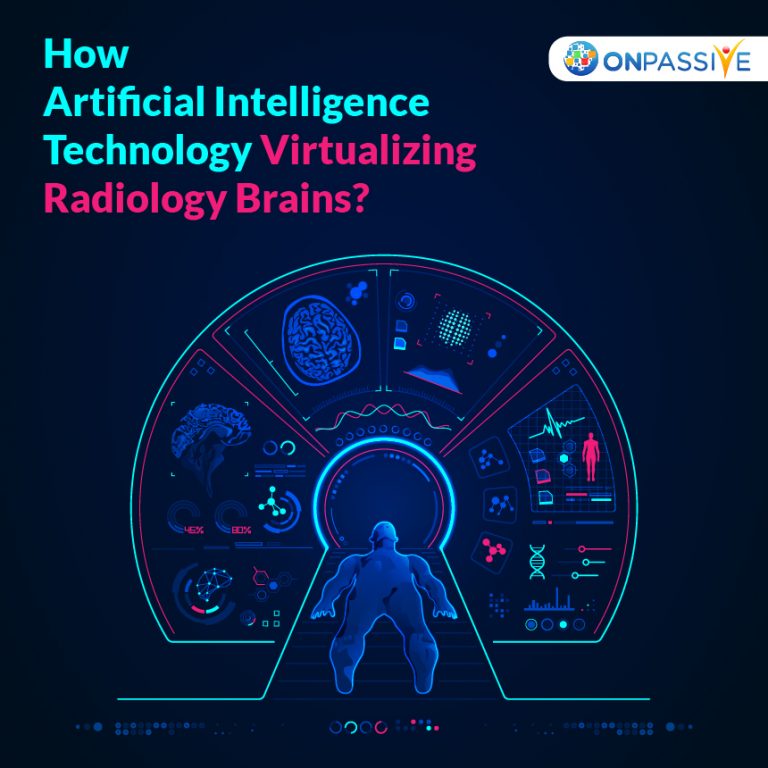
Radiologists adapt themselves to new skill sets and technologies for attaining better productivity by integrating AI with radiology practice.
Artificial Intelligence Technology set to Virtualizing Radiology Brains.
- Artificial Intelligence and automation never replace radiologists but will act as an assistant to a radiologist at every step of imaging detection, diagnosis and prognosis.
- There is an increase with interest and enthusiasm for AI among the radiology community, and as the discussion is moving upwards considering AI as a threat.
Accelerating with exponential growth, artificial intelligence (AI) is all set to move from experimental stages to live industry implementations and marks its identity across all industry vertical.
AI is virtualizing human cognitive that functions in the form of software brain. For organizations, harnessing AI is not optional, but it is critical to stay competitive. Latest Developments in Artificial Intelligence
It predicts the business value derived from AI to reach 3.9 trillion dollars by the year 2022. In this disruptive potential, the investments of AI are ever-increasing by redefining industries with automation processes, and personalization.
The healthcare industry has become most adopters of the AI amongst all others. The advancement of the healthcare industry is reaping with the use of AI to maintain medical records.
- Do mundane tasks more accurately and faster.
- To design care pathways.
- Digital consultations
- Medication management
- Drug creation
- Image analytics
- Big data analytics
- Medical robotics
- Health Monitor and others.
Power of Radiology in Artificial Intelligence
There is a growing demand for the improvement in medical care and an increase in insurance penetration which made the rise in chronic diseases and ageing population demands for better imaging diagnosing and treatments.
Radiology industry has its own set of ongoing challenges. There is a shortage of radiologists topping these lists. This industry is a functional domain for automation by virtualizing domain intelligence into intelligence software’s.
The quantum leap in medical imaging technology led to an exponential growth of medical imaging data stores in digital format.
Deep Learning Algorithms and Image Analytics helps in improving medical diagnosis and aiding radiologists with better reporting efficiency.
Nowadays, with the growing incidences of lifestyle diseases, there is a requirement of frequent imaging, and multiple scans for higher resolutions have improved.
There are scenarios where the hospitals use X-Ray scans, MG scans, CT scans and MRI equipment’s but sans radiologist to read reports.
To bridge this gap where AI can play a pivotal role by performing specific tasks such as
- Image recognition
- Nodule detection
- Hemorrhagic or ischemic stroke detection
- Fracture detection
- Breast cancer analysis with initial case analysis and other narrow studies requisite recognizes potential findings in medical images which is one set of the task performed by radiologists.
It gives a window to radiologists that focuses on
- Image-guiding medical intervention
- Define clinical parameter of imaging examination
- Related findings from images with medical records and test reports Consult physicians for treatment based on the diagnosis
- Discuss procedures and results with a patient.
Artificial Intelligence takes over image reading and interpretations that radiologists read more images within a short period with better accuracy where the number of images has increased more in the last decade from several radiologists.
AI Algorithms has a stronghold in medical imaging. They will become an integral part of RIS-PACS, as frequently we hear some of the other algorithms developed to detect tumors, lesions, fractures and host of other things.
With the help of RIS-PACS workflow-enabled AI, a radiologist sitting at any location can do the reads for any healthcare center located in remote addresses the accessible challenges, subspecialty read, and points in timely care with reduced cost.
Further, it helps them in optimizing results without compromising on the accurateness of detections. For any emergency reporting’s like trauma and stroke cases, AI assists a radiologist with a preliminary report which they conclude with their final interpretation of an issue within the stipulated time.
AI-Enabled RIS-PACS can prioritize stroke or stat cases and reduces turn-around time which in turn improves patient care. The algorithms trained to assist these radiologists with various detections, diagnosis, staging with a sub-classification of multiple medical conditions.
Hence, deep learning is a shoulder for an increased workload in a radiology department.
Global Markets in Artificial Intelligence
AI’s complexity is not a deterrent to its adoption. Instead, it is disruptive as internet use.
The future of investment in AI has not been observed but also proved that it helped to improve a radiologist’s productivity, efficiency and quality detections.
Hence this helps them in reducing costs with increasing returns on investing. In the healthcare industry, AI is rapidly rising within medical photography domains.
Globally, an AI market in medical imaging is forecasted topping two billion dollars. There are an increasing interest and enthusiasm with AI among the radiology community as the discussion is moving upwards from considering this technology, as threats.
Also, the use of AI with clinical applications shown improved clinical results. All the research trends explain how AI is revolutionizing radiology community for an extended period.
AI-based companies know to refresh a radiologist. Realizing the technological potential of AI, a radiology practitioner partnering with AI ventures having a seamless RIS-PACS workflow.
AI is going to augment the way with the best care provided by healthcare practitioners.


